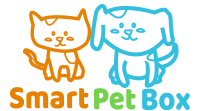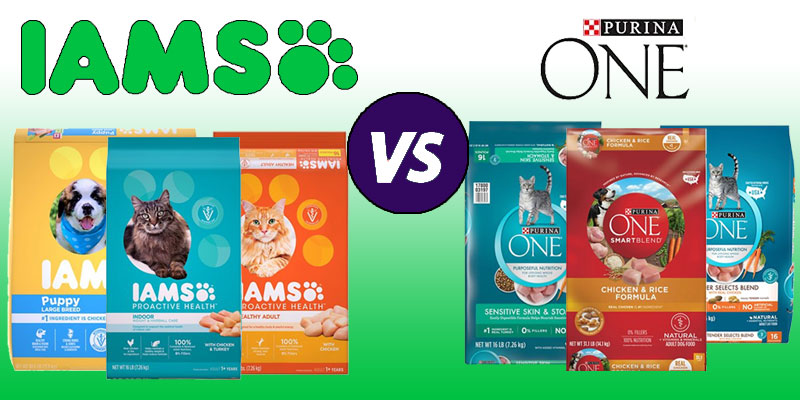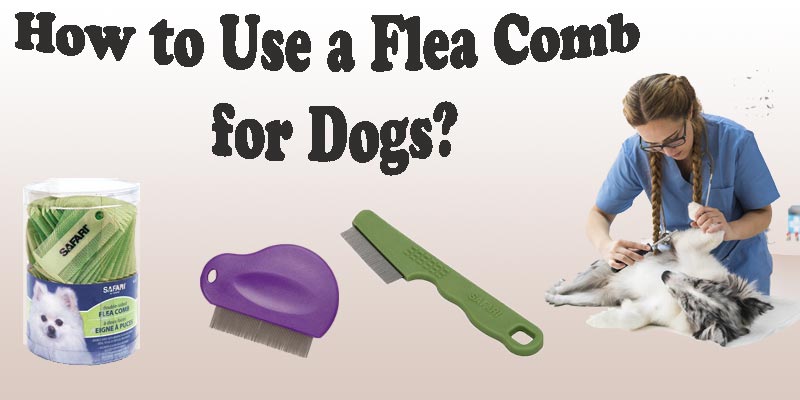
Schnoodle, Puggle, Chowski, —these names certainly sound like they are snacks or fast food franchises, right? Nope! These quirky names are actual designer dog breeds recognized by the International Designer Canine Registry.
The term “designer dog” refers to the offspring of the intentional breeding of two purebred dogs. The goal is to create a new different pooch, which harnesses both the positive traits of its parent breeds.
As a rule, designer dogs are given a name that is a mishmash of their parents’ breeds. For instance, a Schnoodle is a mix of a Schnauzer and Poodle.
Are you wondering if you might have a designer breed? Or perhaps, you are thinking of getting one as a new member of the family.
Scroll down and see some of today’s top 10 designer dog breeds.
10 Most Popular Designer Pooches
Australian Labradoodle

Avg. size:
- Miniature – 13 – 17 inches; 10–20 kilograms
- Medium – 18 – 21 inches; 15–25 kilograms
- Standard – 26 inches max; 40 kilograms max
The name “Australian Labradoodle” is a misnomer; this designer pooch doesn’t have any Australian breed in him. Regardless, this fancy canine sprang to life in Australia, carrying the lineage of the Labrador Retriever, American/English Cocker Spaniel, and Poodle.
It all began when a blind woman from Hawaii sent a request to the Royal Guide Dog Association in Australia for a hypoallergenic assistance dog. After innumerable attempts, the breeder manager Wally Conron finally opened Pandora’s Box in 1988 and the rest is history.
The Aussie Labradoodle is the Audrey Hepburn of the canine universe. This cutie pie features a broad chiseled head, a square muzzle, and a pair of big expressive eyes underneath well-defined eyebrows.
Beneath the beautiful coat is a compact yet athletic build. She also has well-sprung ribs, firm elbows, and strong hocks. These features give her a good reach and drive as she gallops like an elegant gazelle.
- The silky straight hair coat sheds in various degrees and requires high maintenance.
- The fleece coat, on the other hand, is either straight, wavy, or spiral. Many pet owners love this type of coat because it sheds minimally, and it feels as soft as mohair.
- Lastly, we have the wool coat, which is lightweight and silky smooth. This particular coat requires the highest maintenance.
As for the temperament, Aussie Labradoodles have a sunny disposition and an insatiable curiosity.
While they are always game for adventures, they also know when to relax and stay at home for cuddle sessions.
Corgski

- Avg. size: 15 – 18 inches; 23 kilograms max
- Coat colors: apricot, jet black, copper, sable, white, tan (brindled)
No guesswork is needed here. You can tell in a glance that this four-legged nimbus is the love child of two recognizable breeds: a Welsh Corgi (Cardigan/Pembroke) and a Siberian Husky. This designer pooch also goes by the monikers Horgi and Siborgi. Catchy, huh?
The Corgski is an excellent designer dog for families who wish for a playful husky but is incapable of managing its full size. This munchkin will always inherit the lupine facial structure of the Siberian Husky, as well as the stumpy legs and elongated body of a corgi.
Still, you can never tell how big your fancy pooch will grow. If the corgi genes dominate, he might not reach a foot, and if the husky genes dominate more, then he might become a little chunkier.
The coat and color of your fur ball also depend on which parent your pup takes after. So far, a majority of Corgskis sport a velvety-soft double coat with distinctive markings and color combinations reminiscent of a husky. There is also a chance that a pup in a litter could have heterochromia.
Schnoodle

Avg. size:
- Toy – 10 – 12 inches; 3 – 5 kilograms
- Miniature – 12 –15 inches; 6–9 kilograms
- Standard – 15 – 26 inches; 9–34 kilograms
As mentioned earlier, the Schnoodle is the result of mating a Schnauzer with a Poodle. This designer pooch debuted in the early 1980s. The goal for its development was to create a versatile household pet that sheds less and produces minimal dander.
Schnoodles come in three distinct sizes, which is partly because both its parent breeds come in multiple sizes as well.
These fancy pooches may also vary in coat type, even if the pups are from the same litter. Some fur-babies may take after the silky noodle hair of the Poodle, while others sport the shaggy double coat of the Schnauzer. Then there are puppies with coats that look a bit of both.
Whatever the case, there is one physical trait consistent with this designer dog. That is no other than the square muzzle and “gentleman’s beard” of the Schnauzer. If you don’t like it, you may opt for the teddy bear look with the help of a professional groomer.
When it comes to your Schnoodle’s personality, we could only rely on the genetic luck of the draw. Nevertheless, many pet parents of Schnoodles best describe their fur-babies as smart and naughty and at the same time, lovable and eager to please.
Chug

- Avg. size: 6 – 14 inches; 5 – 9 kilograms
- Coat colors: brown, white, cream, black (solid/brindled)
What better way to call a Chihuahua and a Pug mix than Chug? This little guy tends to inherit the wrinkled face of the Pug, but he has the large protruding eyes and dark button nose of the Chihuahua.
Sometimes, his jaw can have a slight underbite, giving him that “angry look.”
Typically, the Chug’s coat is short and low maintenance, but if the long-haired Chi is part of the mix, then he might have a longer coat, instead. As for the ears, it depends on which genes are dominant. If the Chihuahua genes are dominant, then your pup might have erect ears and vice versa.
The Pug’s influence is meant to temper the diva attitude of the Chihuahua. Despite that, it is wise to guide your Chug with a firm but gentle form of training to ensure he won’t turn into a bossy little pooch. Besides, Chugs are fast-learners despite having a short attention span.
Chugs aren’t demanding when it comes to exercise. Still, they enjoy occasional walks in the park. Their tiny legs don’t need to go far to have a good stretch, though.
Cavachon

- Avg. size: 12 – 13 inches; 7 – 16 kilograms
- Coat colors: white, tan, apricot, ruby, black (solid/multi-colored)
The Cavachon is a crossbreed between the Cavalier King Charles Spaniel and the Bichon Frise. He doesn’t go by many monikers with the exceptions of Bichon-King Charles and Cavalier-Bichon.
He is the size of your average lap dog, and as expected of his parent breeds, he enjoys lounging on your lap.
This laidback pooch also loves to paint the town red if you suggest it.
After all, this little charmer loves getting lavished with attention. So, allow some time for a meet and greet while you go out with your pooch.
The Cavachon’s energy level is in the middle of the road. They are well-suited to the apartment life, but having a fenced yard is also agreeable.
Pugapoo

- Avg. size: 8 – 15 inches; 5 – 13 kilograms
- Coat colors: white, cream, gray, fawn, black
The Pugapoo’s origins are murky at best, but he has earned a strong following within the last twenty years or so. That shouldn’t come as no surprise, as the Pugapoo is the Charlie Chaplin of the canine universe.
Born from a Pug and a Poodle, he is the ultimate jester! After all, both the Pug and Poodle are best known for their abilities to make their family members giggle. But just like any other designer breed, Pugapoos are inconsistent in their looks.
Fur-babies in the same litter may look different from each other, depending on the genes they inherit. Some puppies could inherit the Poodle’s curly coat, while others take after the short coat of the Pug.
This pooch is also quite adaptable. He will do well in a large home or in an apartment. But you might want to invest in an indoor puppy playground to stimulate him physically and mentally.
Maltipoo

- Avg. size: 8 – 14 inches; 2 – 9 kilograms
The Maltipoo presents a picture of sweet innocence. Perhaps, the only thing missing in this picture is a halo!
This beautiful ball of fluff is a crossbreed between a Maltese with a Toy or Miniature Poodle.
The result is often a smart, affectionate pooch who retains his puppy-looks well into his senior years.
This angelic pooch also tends to be playful and friendly.
On the downside, Maltipoos love their voice so much, but you can curb this behavior while they are pups. Since Maltipoos are also as vulnerable as china, you need to supervise them around toddlers and bigger dogs.
Moreover, Maltipoos have a low-shedding and low-dander coat with a fluffy, wool-like texture. The length of the coat, however, may vary in length and color.
Pomsky

- Avg. size: 10 – 15 inches; 9 – 14 kg.
- Coat colors: reddish-brown, brown, pure white, grey and white
The Pomsky is a new designer dog breed created through artificial insemination. Although this fancy pooch is relatively new, the Pomsky Club of America is already working on getting the breed recognized officially by the American Kennel Club.
The size of the Pomsky may vary between small to medium, falling somewhere between the Pomeranian and Siberian Husky. Rest assured, he won’t grow as large as the latter!
The Pomsky flaunts a gorgeous, cottony soft double coat. You can’t expect anything less from the Pom and the husky. He also has prick ears and a furry tail that curls over the back. Some Pomskies may also feature some markings of the Siberian Husky.
So, if you want a walking cloud for a companion, then commit to daily brushing and hours of blow-drying. Thankfully, his exercise needs are moderate. Have a lint roller and a robot vacuum ready at all times.
Just like the pompous Pomeranian, the Pomsky loves to be the center of attention, and he firmly believes he is the apple of everyone’s eye. Nonetheless, his irresistible charm and silly antics often get him the attention he craves from his onlookers. While he loves to bask on everybody’s attention, the Pomsky tends to latch on one favorite family member.
Nevertheless, he is guaranteed to make you smile and laugh.
Cockapoo

- Avg. size: 10 – 15 inches; 5.4 – 11 kg
- Coat colors: brown, grey, coffee, tawny, white
The Cockapoo is a small adorable pooch with a big personality. He is the product of crossbreeding a Cocker Spaniel and Poodle.
Although the first breeding may have been accidental, the puppies were well-received and paved the way for generations of Cockapoos.
He has been around since the 1960s, and he still remains one of the most popular designer dogs today.
Cockapoos are people-oriented and highly intelligent, making them a breeze to train. That being said, they make good candidates for agility contests, and they also love to show off.
But most of the time, they just love to be with their family.
The Cockapoo’s coat can have a kaleidoscope of colors, and some can have markings to boot.
Puggle

- Avg. size: 7 – 14 inches; 7 – 14 kilograms
- Coat colors: fawn, apricot, black, tan
It’s funny how this designer dog resembles Buck from Ice Age.
This is the Puggle, the designer dog developed by Wallace Haven, which he debuted in the 1980s. The pooch also goes by the nicknames Bug, Buggle, and Peagle.
As the name hints, the Puggle is the result of crossbreeding a Beagle and a Pug.
Not all Puggles features the wrinkly grumpy face of the Pug. Some of these munchkins have a longer snout and a pair of droopy ears like the Beagle. But one thing is for sure — all Puggles have a screw tail and a pair of round, expressive eyes.
The Puggle is an excellent choice for city dwellers and busy owners because he is a low-maintenance pet.
Rushing down the hallway a few times a day is already a workout for him.
On the downside, Puggles can be a challenge to train, as they would rather chase random objects or discover a new battery of smells.
These munchkins love to play all the time, and they retain their playfulness well into adulthood. You see, they are the epitome of a “forever puppy!”
Takeaway
Many are quick to judge that a designer dog is just a fancy term for a mutt. The truth is a far cry what others believe.
The aim of producing designer dogs is to achieve the positive traits of each parent breed. However, you can’t expect your furry bundle of joy to arrive with a halo.
It is a shame that many pet owners surrendered their designer dogs to shelters because they didn’t meet their expectations.






